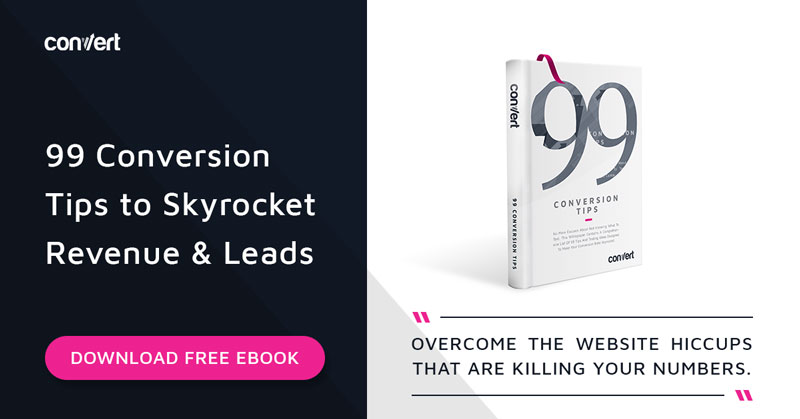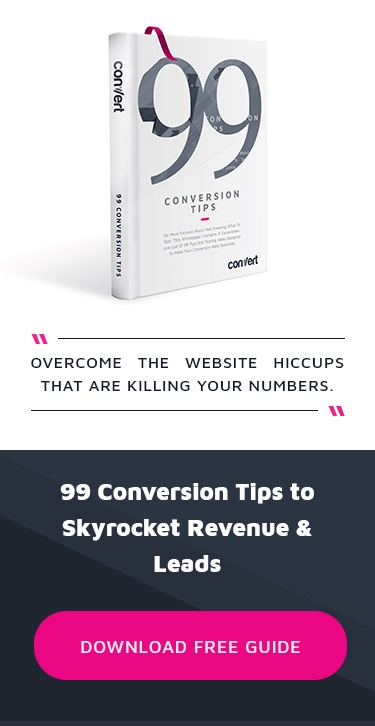How to Use Keyword Research to Pump More Qualified Leads Into Your Conversion Funnel
As a marketer, you can’t afford to be out of touch with your target audience. If you want your strategies to help increase conversions, you need a firm grasp of who they are, what makes them tick, and what they’re looking for at any given time.
You need to stop casting a wide net and start to develop clear-cut offerings that will make your audience say “that’s exactly what I want.”
This is where keyword research steps in.
Remember, the success of any online marketing or advertising strategy depends on your target keywords. Whether you’re trying to draw in leads through SEO, PPC, or content marketing, targeting the right keywords through research ensures that your message reaches the right people.
It can also enable you to avoid going head to head against well-established brands that are way out of your league.
Unfortunately, not every marketer is prepared on how to do keyword research the right way.
Some cut corners and use a list of keywords they scraped months ago, while others simply fail to recognize the gaps between their target keywords and what they actually offer – or just go for the keywords with the largest search volume.
In this post, we’ll look into the steps on how to do keyword research that can help impact your conversion rates positively.
Let’s begin.
1. Renew Your Seed Keywords
The first step to any keyword research strategy is to come up with “seed keywords” that are relevant to your niche.
If you’ve been operating in your niche for quite some time now, you may think that you can mentally concoct a couple of seed keywords without research whatsoever. After all, they are basically just broad terms that may describe your industry, service, or product.
A better strategy, however, is to load up Google and take a look at Autocomplete suggestions. Doing so will also give you an idea of what your target audience could be searching for lately.

Why do you need to renew your seed keywords each time you do research? Trust me, you don’t want your next big budget marketing campaign to be built on outdated keywords.
For now, grab one seed keyword that resonates the most with your product or service — you will need it for the next step.
2. Expanding Your Seed Keyword
Of course, seed keywords are almost always too broad and competitive to be feasible to target. As such, you need a keyword research tool like Ubersuggest to expand it into hundreds of long-tail keyword variations.
In simple terms, long-tail keywords are more specific phrases that consist of at least three terms. They are generally less competitive than seed keywords and are much easier to target in SEO.
For example, if your seed keyword is “event planning”, here are some of the long-tail keyword suggestions that Ubersuggest will generate:

Really useful, right?
However, just because long-tail keywords are easier to rank for, doesn’t mean you can just pick any one of them and call it a day. You still need to determine the profitability of each keyword by analyzing the metrics presented by Ubersuggest.
3. Crunching the Numbers
When conducting keyword research, the first metric that may catch your attention is the average monthly search volume. This is a direct measure of a keyword’s popularity and, in turn, its traffic potential.
In keyword research, there’s no set standard on the average search volume you should aim for when selecting your target keywords. Instead, you have to factor in your planned customer acquisition cost, profit potential per lead, and click-through rate to determine which keyword opportunities are profitable for you.

When it comes to a keyword’s competitiveness, a rating of around 0.4 or less indicates low-medium competition — perfect for small brands in need of fast results.

Lastly, the average cost per click or CPC reflects the average price that advertisers are willing to pay for placements in AdWords. The higher the CPC, the more potent a keyword may be in terms of conversions.

In Ubersuggest, you can click on any of the metric labels to sort the keyword suggestions accordingly. But before you do so, there’s one more thing you need to consider in your keyword research:
4. Looking for Commercial Intent
Just because a keyword suggestion has promising metrics, doesn’t mean it automatically leads to higher conversions.
For example, take a look at the keyword “event manager”.

While this particular keyword has 1,900 monthly searches and a competitiveness score of 0.44, it’s typically used for informational search queries that people search in Google for research.
Maybe searchers are interested in becoming event managers themselves. There’s also a chance that they’re just curious about what an event manager actually does. One thing is for certain, this keyword is probably not going to generate you much revenue due to its ambiguity.
What you must do is to filter the keyword suggestions by adding action-based or commercial terms. In this particular example, let’s try adding the terms “hire,” “find,” “price,” and “services.”

Notice how the number of keyword suggestions is drastically reduced from hundreds to 19.
From there, you can start cherry-picking new target keywords based on their metrics. Just don’t forget to check the monthly search volumes of each to check for seasonality.

5. Sprinkling Keywords In Your Content
There you have it — new keyword opportunities that can send your marketing off to a profitable trajectory.
It’s now time to weave your keywords into key areas of your webpage.
Keep in mind that keywords not only improve your rank worthiness. They can also be added to your on-page content to improve click-throughs and the conversion rate on your landing or product pages.
For your reference, here is a quick list of the website elements where you need to insert your target keywords:
- Page title
- Subheadings
- Main content
- Meta description
- Permalink/page URL
- Image alt text
- Image filename
Conclusion
It doesn’t matter if you’re building links for SEO, creating content for social media, or optimizing for higher conversions — your strategy needs to be built upon an up to date list of well-targeted keywords to make sure your efforts lead to good revenue.
Whatever you do, be patient and handle each step of your keyword research with utmost care.
Written By
Matt Janaway


